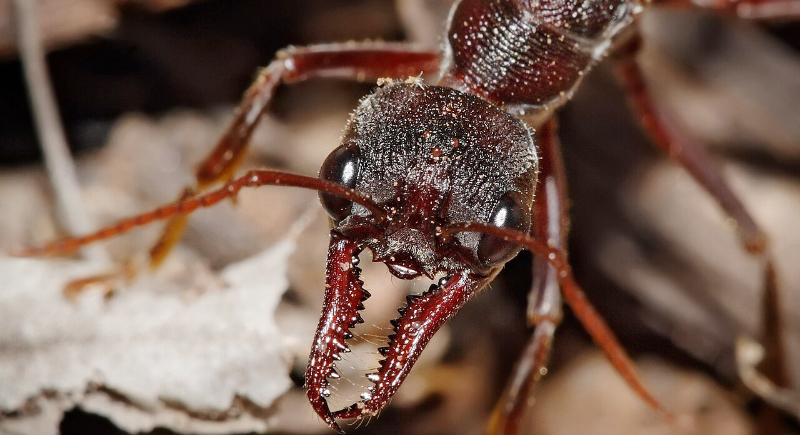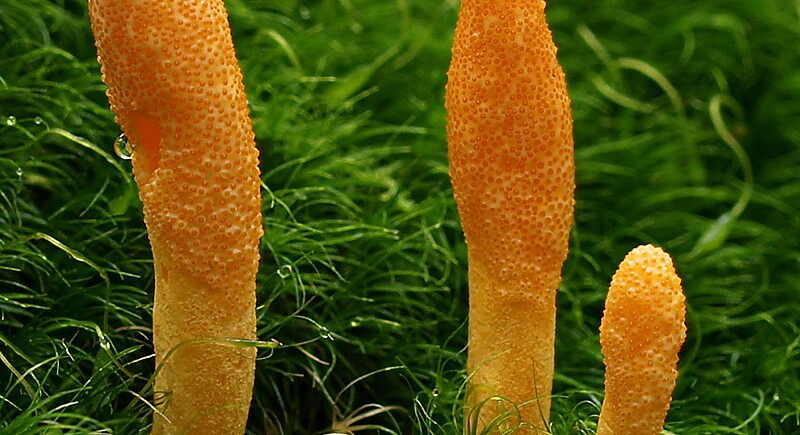The Fungus That Turns Ants into Zombies and Controls Their Minds
In the dense forests of South America and Southeast Asia, a parasite operates with chilling precision. Ophiocordyceps unilateralis, often called the zombie-ant fungus, infects ants, invades their bodies, and takes control of their behavior. This is not just parasitism but behavioral manipulation at the molecular level. The infected ants are driven to their elimination in ways that serve the agent, not the host.
It’s one of the most extreme examples of nature using a living creature to reproduce. For this reason, scientists have been studying this parasite for decades to understand how it works, how it evolved, and what it could teach us.
How Infection Begins and What Happens Inside the Ant

Image via Wikimedia Commons/fir0002 flagstaffotos
The process starts when a fungal spore lands on a carpenter ant. If the ant’s exoskeleton allows it, the spore attaches and penetrates the body. Inside, the pathogen grows slowly, absorbs nutrients, and releases compounds that help it spread. For several days, the ant continues its normal behavior. This is key to avoiding detection by the rest of the colony. Consequently, the fungus avoids triggering social immunity responses that ants use to remove sick members.
As the fungus advances, it builds a network of fungal cells through the body. The internal structure expands along muscles and other tissues. Researchers have found that the brain remains largely intact during this time because the parasite focuses instead on physical control. This allows the ant to continue moving but strips it of voluntary manipulation. Experts call this form of behavioral manipulation “summit disease,” because the ant is later compelled to leave the colony and climb vegetation before it dies.
Why The Ant Climbs and Bites into a Leaf Before Dying
After several days of internal growth, the infected ant travels upward. Eventually, it finds a leaf or twig and bites into it with abnormal force. This location usually sits around 25 centimeters above the ground—an area with ideal temperature and humidity for fungal build-up. The bite is permanent, which means that once the ant locks its mandibles in place, it cannot release. This action ensures that the ant stays fixed in an elevated position.
After it loses its life, the agent emerges from the back of the ant’s head. It develops a long stalk called a stomata that produces spores. These spores fall to the forest floor and infect more ants, especially those walking on nearby foraging trails, and this cycle can repeat indefinitely. In some cases, entire ant colonies can suffer significant losses, although usually only a few individuals are infected at any one time.
The Role of Cordyceps Species in Medicine and Agriculture

Image via Wikimedia Commons/Andreas Kunze
It should be noted that not all Cordyceps species infect ants. Over 600 have been identified worldwide, and their targets include spiders, moths, and even other fungi. One species, Ophiocordyceps sinensis, infects ghost moth caterpillars high in the mountains of the Tibetan Plateau. For centuries, people have harvested this fungus for use in traditional Chinese and Tibetan medicine. It has been used to treat conditions related to inflammation and respiratory illness. Due to its rarity, O. sinensis is now endangered in parts of China.
Other species, like Cordyceps militaris, are easier to cultivate and are used as commercial substitutes. Professionals are also studying these fungi for pest control. For example, Cordyceps chivonica targets citrus leaf miners, and C. militaris can reduce coconut root grub populations. Both pests damage crops in ways that are difficult to influence using traditional methods. Fungi-based biocontrols may offer safer alternatives to synthetic pesticides, especially in regions where chemical use poses risks to people and ecosystems.